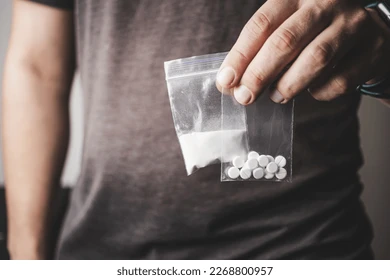The history of lysergic acid diethylamide (LSD) is a fascinating journey through science, medicine, culture, and controversy. Discovered in 1938 by Swiss chemist Albert Hofmann at Sandoz Laboratories, LSD was initially synthesized from lysergic acid, a compound found in ergot, a fungus that infects grains like rye. Hofmann’s primary goal was to develop a circulatory stimulant, but the compound’s unique psychoactive properties would only come to light years later.
In 1943, Hofmann inadvertently absorbed a small amount of LSD through his skin and experienced its mind-altering effects. Curious, he intentionally ingested 250 micrograms of the substance three days later, marking the world’s first deliberate LSD trip—a day now celebrated as “Bicycle Day,” named after his surreal bicycle ride home during the experience.
Following this discovery, LSD entered a period of scientific exploration. Throughout the 1950s and early 1960s, psychiatrists and researchers studied the drug’s potential for treating mental health conditions. If you want to buy LSD in USA Online you can contact us Feel free to order at anytime.LSD-assisted psychotherapy showed promise for addressing depression, anxiety, and addiction, with some patients reporting profound insights and emotional breakthroughs. During this time, Sandoz Laboratories marketed LSD under the trade name Delysid, providing it to researchers and clinicians worldwide.
However, LSD’s transition from the laboratory to the broader culture drastically altered its trajectory. By the 1960s, the drug had become emblematic of the counterculture movement. Advocates like Timothy Leary, a Harvard psychologist, promoted LSD as a means of expanding consciousness and achieving spiritual enlightenment. Leary’s famous slogan, “Turn on, tune in, drop out,” became a rallying cry for those seeking liberation from societal norms.
As recreational use soared, so did concerns about its safety and societal impact. Reports of “bad trips” and reckless behavior fueled public alarm, prompting governments to crack down on its use. In 1966, the United States banned LSD, classifying it as a Schedule I substance, a designation echoed by many other countries. This effectively halted most research and pushed LSD into the underground.
In recent decades, however, interest in LSD has resurged. Modern clinical trials are revisiting its potential to treat mental health conditions, rekindling hope for its therapeutic applications. From its accidental discovery to its role in shaping cultural revolutions, LSD’s history is a testament to its profound impact on science, society, and human consciousness.


